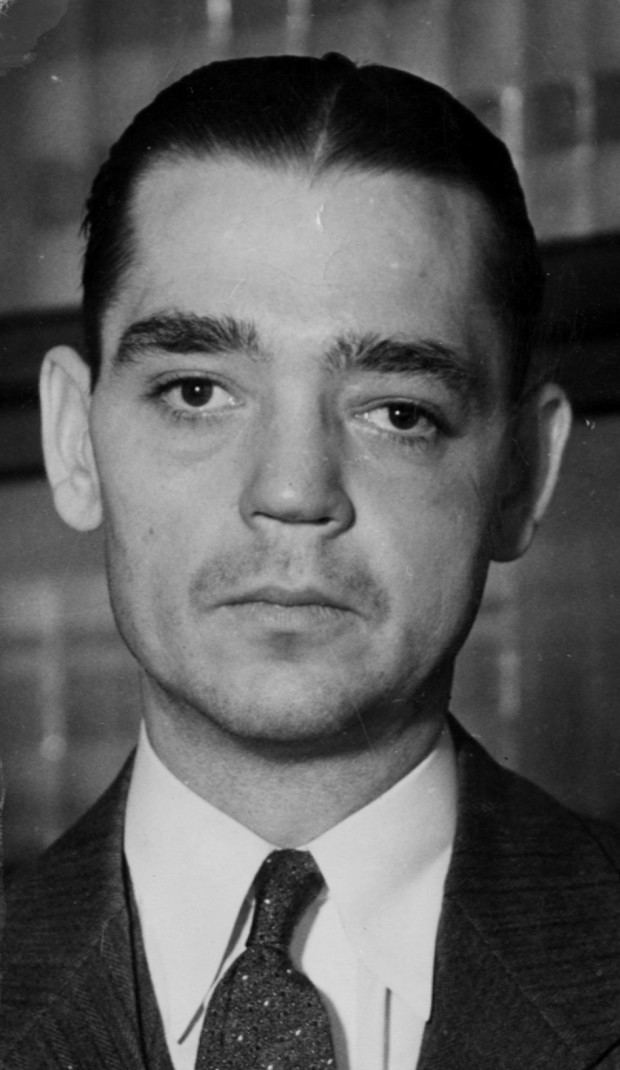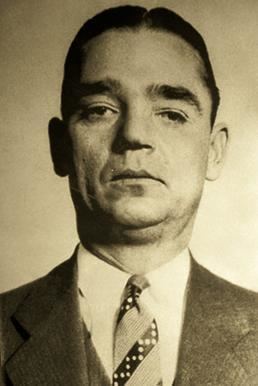Religion Roman Catholic | Name Gus Winkler | |
 | ||
Full Name August Henry Winkeler Spouse(s) Georgette (Bence) Winkeler Died October 9, 1933, Chicago, Illinois, United States Similar People Roger Touhy, Jack McGurn, Hymie Weiss, John Scalise, Dean O'Banion | ||
Banana Peel Rag [Gus Winkler] | Ragtime Piano Tutorial
Gus Winkler (March 28, 1901 – October 9, 1933) was an American gangster who headed a Prohibition-era criminal gang specializing in armed robbery and murder for hire with Fred "Killer" Burke. Winkler was an associate of Chicago mob boss Al Capone and is considered a suspect in the St. Valentine's Day Massacre.
Contents
- Banana Peel Rag Gus Winkler Ragtime Piano Tutorial
- Early life
- Partnership with Al Capone
- Death
- Other
- References

Early life
Winkler was born August Henry Winkeler to Bernard J. Winkeler (September 28, 1862- November 23, 1928) and Mary K. (June 1, 1862- March 5, 1923) in Lemay, Missouri of German descent; he was a brother to Clara (April 21, 1895 – June 23, 1987), Jacob C. (1893-1961) and Anna C. (1890-1960).
In September 1917, at the age of 16, Winkler enlisted in the U.S. Army Ambulance Corps and served on the Western Front with the 91st Infantry Division. After his return to America, Winkler joined up with the notorious Egan's Rats gang. It was during this time that he first became associated with Fred "Killer" Burke and Bob Carey, among others. Winkler later confessed to his wife Georgette to participating in the "one-way ride" murder of auto thief Wesley Smith in July 1923. After the heart of the Egan gang went to prison for mail robbery in November 1924, Winkler and his pals signed on with the South City-based Cuckoo Gang. Winkler, Burke, and Milford Jones were captured in downtown St. Louis on June 5, 1925 after a high-speed chase and shootout with the St. Louis police. Within a year and a half, Winkler moved to Detroit and briefly aligned himself with the Purple Gang that was under control of Abe Bernstein.
Partnership with Al Capone
After arousing the ire of Al Capone by kidnapping a Detroit gambler, Winkler and his pals hired out for freelance work from Capone and the Chicago Outfit in exchange for releasing the gambler unharmed. Capone and Winkler cultivated a close friendship and the Chicago mob boss used Gus and his friends (Fred Burke, Bob Carey, Raymond "Crane Neck" Nugent and Fred Goetz) for special assignments. Capone jokingly referred to the men as his "American Boys." Circumstantial evidence and testimony from Georgette Winkeler indicates that Winkler and his crew may have participated in the July 1928 murder of Brooklyn gangster Frankie Yale and the St. Valentine's Day Massacre. The American Boys were also implicated in the murder of Toledo police officer George Zientara on April 16, 1928, who was shot dead in the aftermath of an American Express armored truck heist. Winkler himself enjoyed Capone's complete confidence, even after Fred Burke was publicly named as a suspect in the massacre and the discovery of the murder weapons. Winkler often told people that he worked as a 'contractor' which might have played on the undertone of the word and his career as a contract killer.
Death
The fallout from the Valentine's Day massacre proved to be the undoing of the American Boys as an organized sub-group. Fred Burke was eventually captured and imprisoned for the murder of St. Joseph, Michigan police office Charles Skelly, Bob Carey was exiled from Chicago after attempting to blackmail a friend of Capone's, and Crane Neck Nugent vanished without a trace. Gus Winkler, along with St. Louis gangster John "Babs" Moran, was severely injured in a car accident in Berrien County, Michigan on August 3, 1931. While Winkler survived, the crash cost him one of his eyes. While in his hospital bed, Winkler was accused of planning and taking part in the September 1930 robbery of US$2 million from a bank in Lincoln, Nebraska. While Winkler hadn't done the robbery, he knew who did and claimed he could convince the actual heisters to turn over the loot. After this assurance, Capone reluctantly put up Winkler's $100,000 cash bond. After his release, Winkler did indeed deliver as promised. By the next year, Gus had carved out a lucrative position in the rackets of Chicago's North Side, despite his cooperation with authorities.
The beginning of the end for Gus Winkler began upon Capone's 1931 imprisonment. With Frank Nitti now in charge of the mob, Winkler was surrounded by gangsters who he didn't trust. Nitti and other top Outfit mobsters had never been especially fond of the American Boys, whose rise to prominence was a product of Capone's generosity. After Nitti was shot and nearly killed by Chicago police detective Harry Lang in December 1932, his suspicions towards Winkler only intensified. After Gus Winkler was observed making visits to the Bankers Building office of FBI agent Melvin Purvis in the summer of 1933, Nitti decided to act. While Winkler was only giving the feds tips on Kansas City Massacre suspect Verne Miller, Nitti believed that he was turning informer.
While entering the beer distribution office of Charles Weber at 1414 Roscoe Street on the afternoon of October 9, 1933, Winkler was hit by multiple shotgun blasts fired by unknown assailants hidden in the back of a green delivery truck. Winkler died a half-an-hour later after arriving at a local hospital. He was buried at Park Lawn Cemetery in St. Louis. Winkler was one of the main casualties of a half-year-long purge where Frank Nitti eliminated the last of the so-called American Boys; including one of Winkler's alleged killers, Fred Goetz. Gus's wife, the former 'Georgette Bence' (1898-1962), would later write her memoirs in which she detailed her life with the notorious gangster.
Other
On February 29, 1960, while at his home in Florence, South Carolina, former FBI agent Melvin Purvis died from a gunshot wound to the head fired from a .45 automatic given to him by fellow agents when he resigned from the Bureau. The FBI investigated his death and declared it a suicide, although the official coroner's report did not label the cause of death as such. A later investigation suggested that Purvis may have shot himself accidentally while trying to extract a tracer bullet jammed in the pistol. Later investigation revealed that the pistol that had taken Purvis's life had once belonged to none other than gangster Gus Winkler; the gun is believed to have been confiscated from Winkler during his debriefing at the Bankers Building in the summer of 1933.
